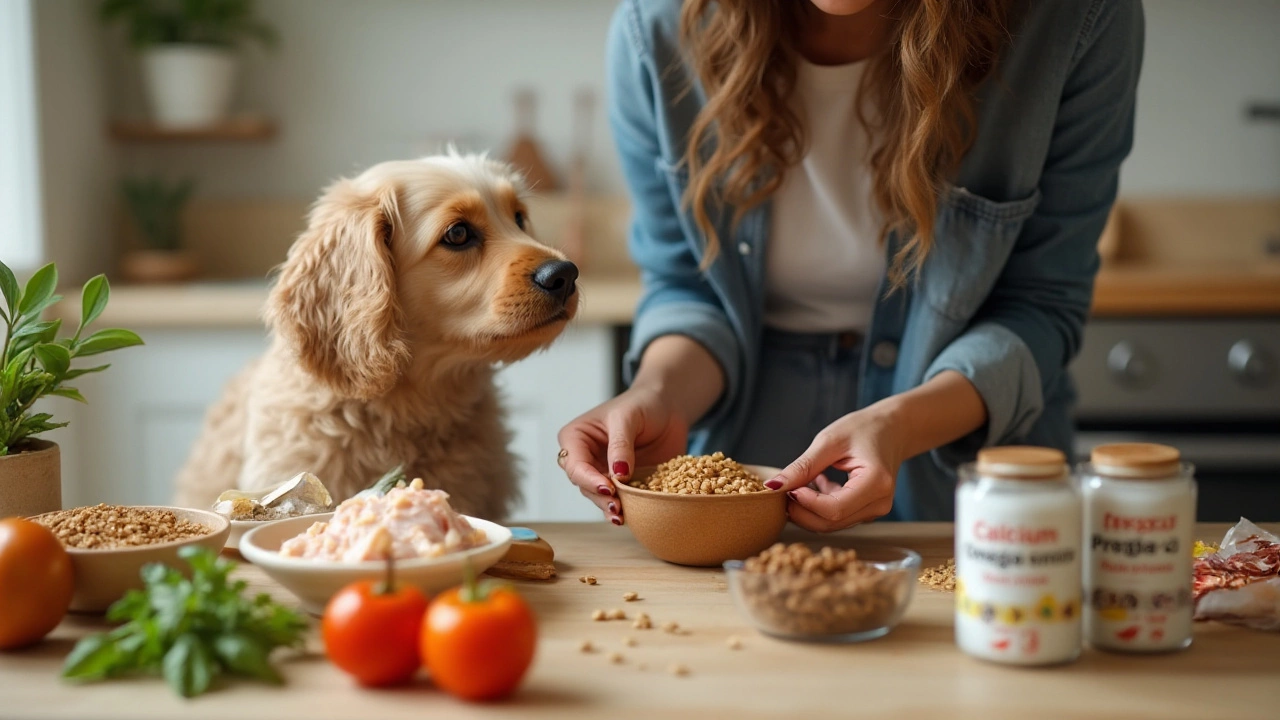Homemade Dog Food: Quick Recipes and Practical Tips
Thinking about swapping store‑bought kibble for meals you whip up in the kitchen? You’re not alone. Many dog owners want to know exactly what’s in their pet’s bowl, and cooking at home gives you that control. Below you’ll find the core things you need to consider before you start, plus a few beginner‑friendly recipes you can try tonight.
Why Go Homemade?
First off, homemade meals let you avoid mystery fillers and artificial flavors. You can tailor the protein, carbs, and veggies to suit your dog’s age, size, and any health quirks. Fresh ingredients also tend to taste better, which often means a happier eater and less begging at the table.
But it’s not just about taste. A balanced homemade diet can support joint health, shinier coats, and stable energy levels. That said, you’ll need to hit the right ratios of protein, fat, and fiber – otherwise you risk nutritional gaps.
Getting the Basics Right
Start with a simple formula: protein (45‑55%), carbs (30‑40%), vegetables (10‑15%), and a small amount of healthy fat (5‑10%). Good protein sources include lean chicken, turkey, beef, or fish. For carbs, think brown rice, sweet potato, or oats. Veggies like carrots, peas, and green beans add vitamins and fiber.
Don’t forget essential supplements. Calcium is a must – a teaspoon of plain, unsweetened yogurt or a calcium powder works well. Omega‑3 fish oil adds brain and coat benefits, while a multivitamin formulated for dogs covers any micronutrient gaps.
A quick rule of thumb: for a medium‑size dog, aim for about 1/2 cup of cooked protein, 1/4 cup of carbs, and a small handful of veggies per meal, divided into two feedings. Adjust portions up or down based on your dog’s activity level and body condition.
Safety comes first. Always cook meat thoroughly, avoid seasoning (especially onion, garlic, or excess salt), and steer clear of toxic foods like grapes, chocolate, and xylitol‑sweetened treats. If you’re unsure about a ingredient, check a reliable pet‑food resource before adding it.
Now, let’s put theory into practice with two starter recipes.
Starter Recipes
1. Simple Chicken & Rice Bowl
- 1 cup cooked, shredded chicken breast (no skin)
- ½ cup cooked brown rice
- ¼ cup steamed carrots and peas
- 1 tsp plain yogurt (calcium) and a dash of fish oil
Mix everything, let it cool, and serve.
2. Beef & Sweet Potato Mash
- 1 cup lean ground beef, browned
- ½ cup mashed sweet potato (no butter)
- ¼ cup green beans, chopped
- ½ tsp calcium powder (or a sprinkle of cheese)
Combine, cool, and portion out.
Both meals hit the protein‑carb‑veg balance and are easy to prep in under 30 minutes. Store leftovers in airtight containers for up to three days in the fridge.
Before you commit fully, try feeding your dog one of these recipes for a week while monitoring weight, stool quality, and energy. If anything seems off, adjust the ingredients or consult your vet.
Homemade dog food doesn’t have to be a daily marathon. Even feeding a few meals a week can boost nutrition and strengthen the bond with your pup. Use the tips above, keep safety in mind, and enjoy the satisfaction of feeding your dog a meal you truly understand.
Essential Supplements for Homemade Dog Food Recipes
Creating homemade dog food can be a rewarding venture, giving you control over the ingredients and quality of your pet's diet. However, ensuring your dog receives balanced nutrition requires adding essential supplements. This article explores the necessary supplements for a canine diet, like calcium, omega-3 fatty acids, and probiotics, ensuring your furry friend is as healthy as possible. Learn how to tailor supplements to your pet's specific needs and approximate the right doses.
